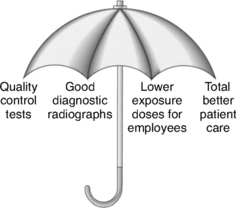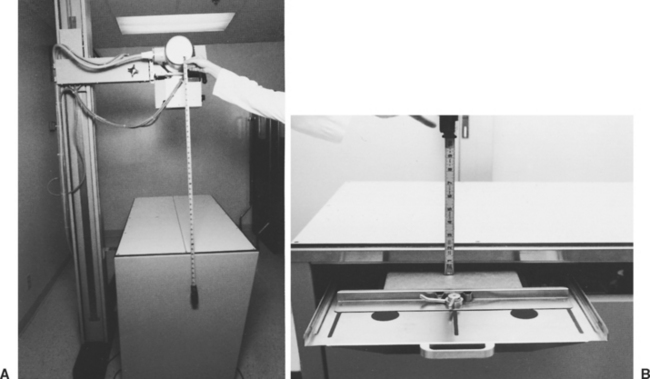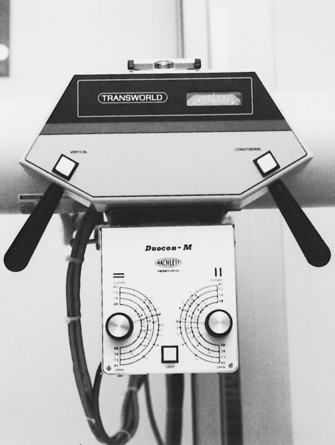chapter 10 Quality Assurance/Quality Control
Quality assurance: A system of activities, the purpose of which is to provide assurance that overall quality control is being done effectively. The system involves continuing education on the adequacy and effectiveness of the overall quality control program and initiates corrective measures where necessary.
Quality control: The overall system of activities, the purpose of which is to provide a quality product or service that meets the needs of the users. The aim of quality control is to provide quality that is satisfactory, adequate, dependable, and economic.
INTRODUCTION
If the quality assurance program is the “umbrella” or management portion, then the quality control segment covers the integrity and function of the equipment and the measurement of image quality (Fig. 10-1).
QUALITY ASSURANCE/QUALITY CONTROL IN VETERINARY RADIOGRAPHY
Equipment
These items should be stored within easy access—and together—to eliminate confusion and delay when it is time to conduct the tests. Most of these tests are done only annually; if this is not the case, it is noted in the test procedure.
Equipment Needed
QA/QC TESTS FOR THE X-RAY APPARATUS
SOURCE-IMAGE DISTANCE (SID) MARKS
Procedure
QA/QC TESTS FOR THE X-RAY APPARATUS
PERPENDICULARITY
Procedure
QA/QC TESTS FOR THE X-RAY APPARATUS
X-RAY FIELD LIGHT
Procedure
QA/QC TESTS FOR THE X-RAY APPARATUS
LIGHT FIELD SIZE
Procedure
Stay updated, free articles. Join our Telegram channel

Full access? Get Clinical Tree





